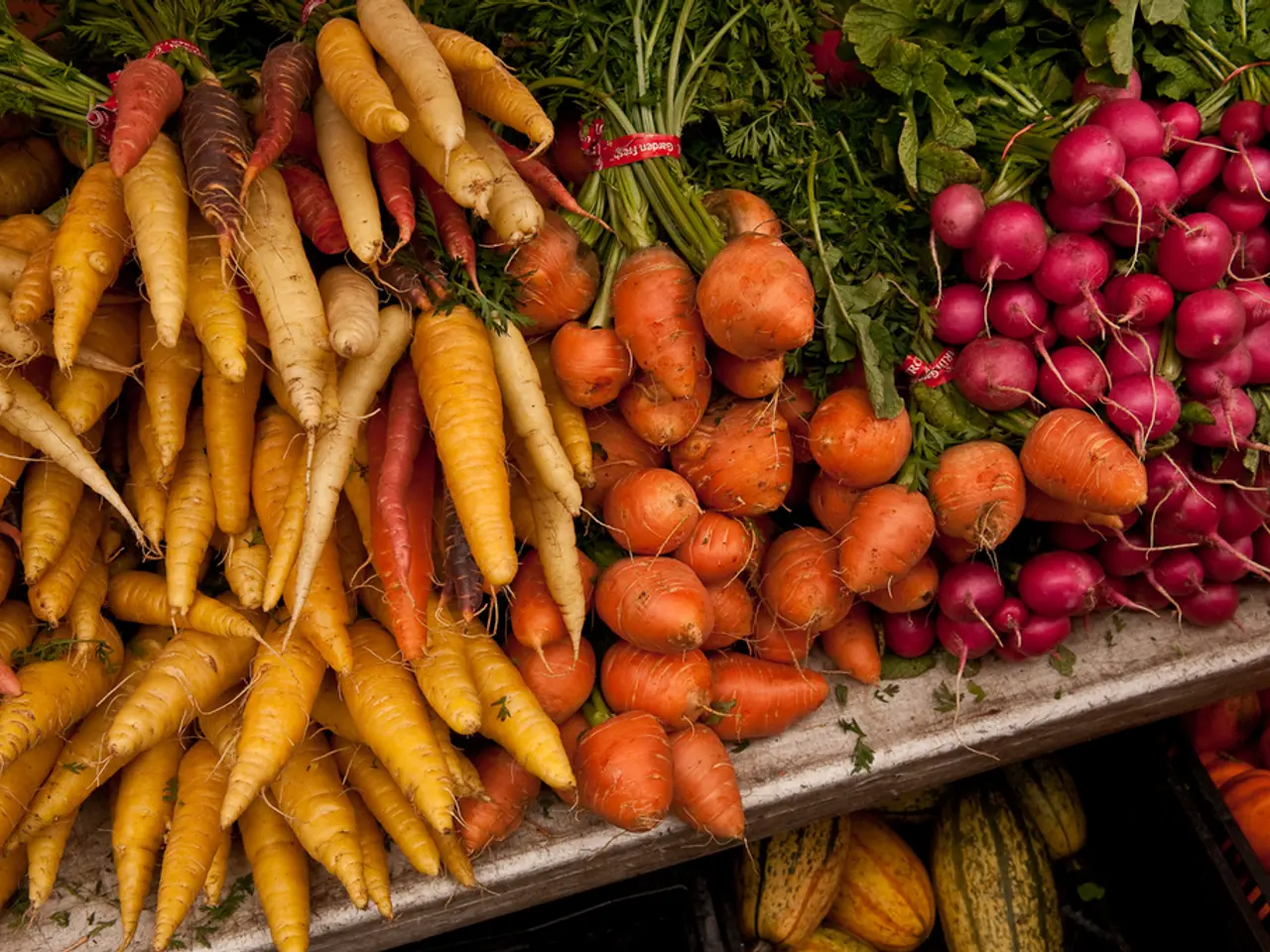Instruction Manual for Novices: Container-Based Plant Cultivation Explored Thoroughly
Starting a container vegetable garden can be an exciting and rewarding experience, especially for those with limited outdoor space. This guide provides essential tips for beginners to grow productive and healthy vegetables using containers.
Choosing the Right Containers
Selecting the appropriate containers is crucial for a thriving container garden. Look for pots with good drainage and a size that accommodates the vegetables you want to grow. A depth of at least 6–8 inches is recommended. Most pots, planters, or window boxes sold at local nurseries do not have drainage holes, so remember to drill holes if necessary.
Quality Potting Mix
Avoid garden soil or topsoil for container gardening as they can be too heavy and suffocate roots. Instead, opt for a high-quality potting mix designed for container gardening. Mixes with coconut coir, compost, pumice, and perlite offer the perfect balance of aeration and moisture retention.
Selecting Suitable Vegetables
Choose vegetables with similar water and light requirements if planted together. Easy-to-grow families like herbs, leafy greens, tomatoes, cucumbers, and peppers are good beginner choices.
Consistent Watering and Feeding
Container vegetables often need more frequent watering since containers dry out faster. Using organic feeding methods, like the DIY root-feeding trick with recycled bottles that slowly release nutrients, helps promote healthy growth.
Positioning Containers in Sunny Spots
Most vegetables require full sun, so position your containers in sunny spots. The mobility of containers allows you to optimize light exposure throughout the season.
Start with Versatile Container Sizes
Start with versatile container sizes around 25–40 cm wide for herbs and greens, and use larger pots for bigger plants like tomatoes.
Preparing and Maintaining Your Soil Mix
Prepare and maintain your soil mix tailored to vegetable needs, and refresh or amend it each season for best results.
Avoid Overcrowding and Overwatering
Overcrowding a container garden can lead to stunted growth, the quick spread of disease, and difficulties with harvesting crops. Similarly, overwatering is the most common cause of plant deaths, so be mindful when watering your container garden.
Material and Drainage Considerations
The type of material of the container can affect how much water it absorbs. For example, terra cotta pots absorb more water than ceramic pots. A container with drainage allows for proper watering while preventing the roots from sitting in water for too long.
Portable Containers for All Seasons
Grow bags are portable containers that can be transported indoors once the weather gets too cold. They are perfect for those who want to grow plants during the fall and winter seasons.
Container Gardening for a Variety of Plants
Certain vegetables and herbs thrive in container gardens, such as peppers, tomatoes, rosemary, oregano, parsley, basil, spinach, kale, lettuce, radishes, beets, cucumber, carrots, broccoli, bok choy/baby choy, jalapeños, arugula, sage, and garlic. If you want to grow plants in pots, you need to drill a hole in the bottom to ensure proper drainage.
By following these guidelines, you can create a productive and healthy container vegetable garden suitable for small spaces like balconies, patios, or rooftops. Happy gardening!
Embracing container gardening can enhance one's home-and-garden lifestyle by fostering successful growth of vegetables even in limited spaces. Beginners should choose suitable containers, preferably with good drainage and a size accommodating the vegetable they want to grow, especially those offering a minimum depth of 6–8 inches.
For optimum container garden results, opt for a quality potting mix specifically designed for container gardening, as this ensures appropriate aeration and moisture retention, preventing suffocation of roots.
Container gardening isn't just limited to vegetables; it can also be an effective way to grow various herbs, making your balcony, patio, or rooftop into a small but vibrant home-and-garden oasis.




